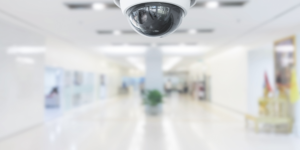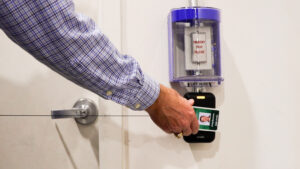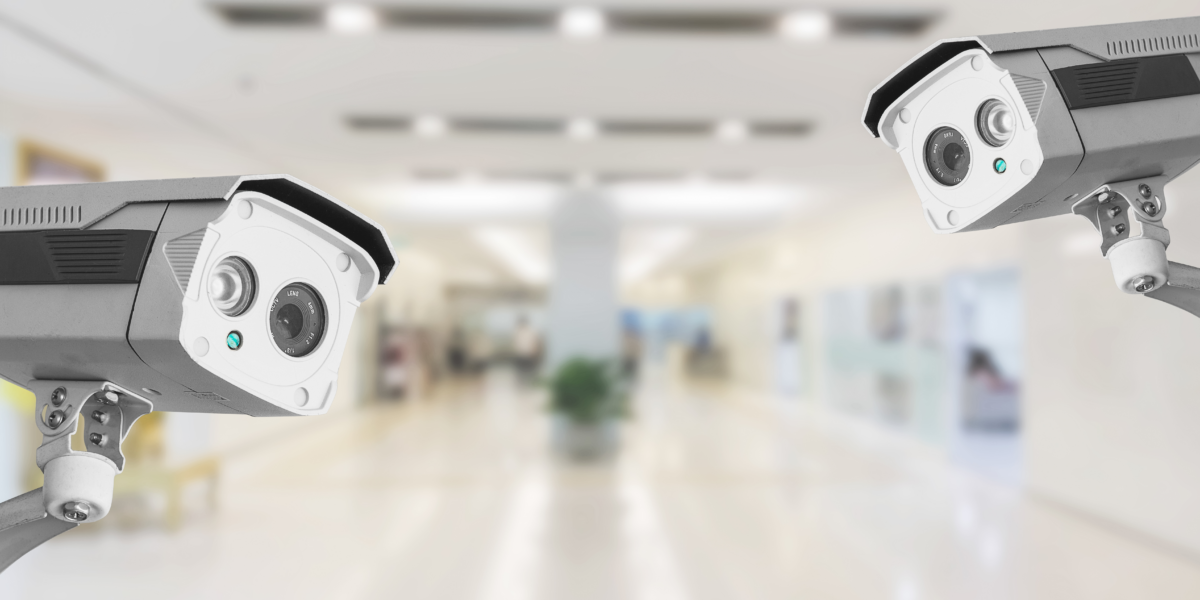The United States healthcare industry is massive, complicated, and controversial. However, one thing that all can agree on is the need for security within the industry. Healthcare facilities must be secure for the benefit of patients and medical workers. The importance of the work occurring in medical facilities demands a safe environment. Various systems need to be integrated at a healthcare facility to maintain security.
Security and Surveillance Systems
Security cameras have become commonplace in society, and hospitals/medical facilities are no different. They are particularly vulnerable to security issues as patients are unwell and unable to protect themselves, and there may be many entrances.
Multiple rooms need monitoring beyond surveying the entrance and egress to the facility. These include pharmacies, controlled substance storage areas, information and file storage rooms, equipment storage rooms, lobbies, emergency rooms, hallways, and waiting rooms.
Patient rooms also benefit from surveillance as some patients may be prone to self-harm, falling, or abuse. Body-worn cameras by medical personnel help with surveillance and improve medical outcomes, reduce liability, and enhance patient satisfaction.

While this seems to cover the entire facility, where to place surveillance systems is not simple. Medical facilities must know where video cameras are to ensure compliance with state and federal laws and the Health Insurance Portability and Accountability Act (HIPAA). Passed by Congress in 1994, HIPAA “… is a federal law that required the creation of national standards to protect sensitive patient health information from being disclosed without the patient’s consent or knowledge.”
Monitoring a facility while staying compliant with HIPAA is easier with today’s cameras, which are AI-driven. They utilize data analysis and multi-sensor technology as part of their surveillance to better inform security of what they are looking for. This means fewer false alarms and better surveillance.
Lots of surveillance cameras lead to loads of video. Managing the accompanying video is challenging since hospitals may keep surveillance footage for up to ninety days. If security personnel need to review/find particular footage, sifting through the video would be very time-consuming. However, the video has less irrelevant footage because the cameras are AI-driven and trained on what to look for.

Access Control Technology
Building managers of all facilities are concerned with who enters and exits the building – This is standard critical security information.
Monitoring the entrances and exits of a medical facility, particularly at a hospital, is very challenging. Because hospitals are always open – 24/7/365 – access control is a constant challenge. Access issues go beyond the building entrance and security. Access is limited within a hospital as certain areas are sensitive, and occupants may be vulnerable to disease or sickness if not properly prepped.
Another challenge for hospitals is that they have significant traffic, including medical personnel, patients, visitors, etc.; Knowing who should have access to where and when is difficult to monitor.
Medical facilities may have security guards at a particularly busy or sensitive location within the location. Security personnel are effective but can be costly. Staffing can also be a challenge.
 Electric access control via badges is an effective way to control entrance. A badge limits access and tracks who has entered the area and when. This is helpful in an emergency evacuation. Security personnel can track where people are and confirm who is in a safe environment.
Electric access control via badges is an effective way to control entrance. A badge limits access and tracks who has entered the area and when. This is helpful in an emergency evacuation. Security personnel can track where people are and confirm who is in a safe environment.
In the case of a breach, security personnel can track who was in the area and when. Therefore, the investigation is more likely to result in finding the culprit. Security staff can implement changes based on the investigation, making areas less vulnerable.
With electronic access, trends can be spotted and studied. Management can make any necessary changes to secure the area and reconfigure areas to increase efficiency.
Finally, badges can be easily deactivated if they are lost or stolen. Badges can also grant limited access giving security personnel more control over the area. Creating a new badge is simple and inexpensive. When medical facilities use keys for entry, tracking them is much more difficult. If a key is lost, the facility would have to change the locks (which is costly and time-consuming) to maintain the same level of security.
Call Systems
Medical personnel deal with many patients who aren’t patients. While patient impatience is likely due to fear, it impacts care, safety, and security. Consider a nurse at the nurse’s station who hears the call system.
They know the room the alert is coming from but have yet to learn who pushed the button and what the emergency is. The nurse goes into the room blind and has to adjust to the situation on the fly. Suppose the call system is integrated with the surveillance system. In that case, the nurse can instantly see what’s happening in the room where the call came from.
The nurse would be able to handle the situation. They also would know if it’s a true emergency and if a rush is needed. Someone other than the patient may have pushed the call button, and the nurse could find themselves in unsafe conditions – the emergency may be related to security.
All medical personnel should have access to a call system where they can urgently alert security. Studies show that those who work in healthcare are “four times more likely to be assaulted than workers in private industry…” and “… account for approximately 50% of all victims of workplace violence.”
A call system can help security personnel react to situations more quickly. Ultimately, alerting security personnel so they can be in the trouble spots quickly can help keep staff and patients safer and protect the facility. When a call system ties into other security equipment, it can initiate a lockdown when necessary and minimize the area impacted by the safety issue.
There’s nothing more valuable than your health. Keeping healthcare facilities safe allows medical professionals to deliver their best care. It keeps each of us as healthy as possible. We must do everything possible to secure the healthcare industry.
Miller Electric is a leading integrator in security, access control, surveillance, and audio/video systems. We have the experience and expertise to integrate hardware, software, and infrastructure from diverse cutting-edge manufacturers. Contact us to learn more about how we can enhance the experience and safety of your organization’s employees, patients, and visitors.
